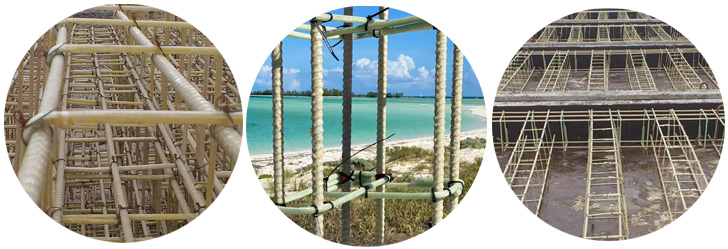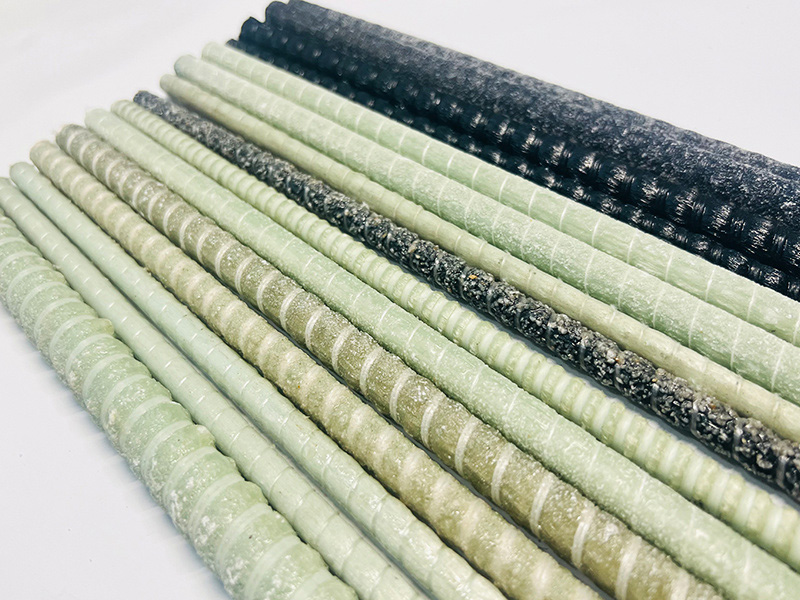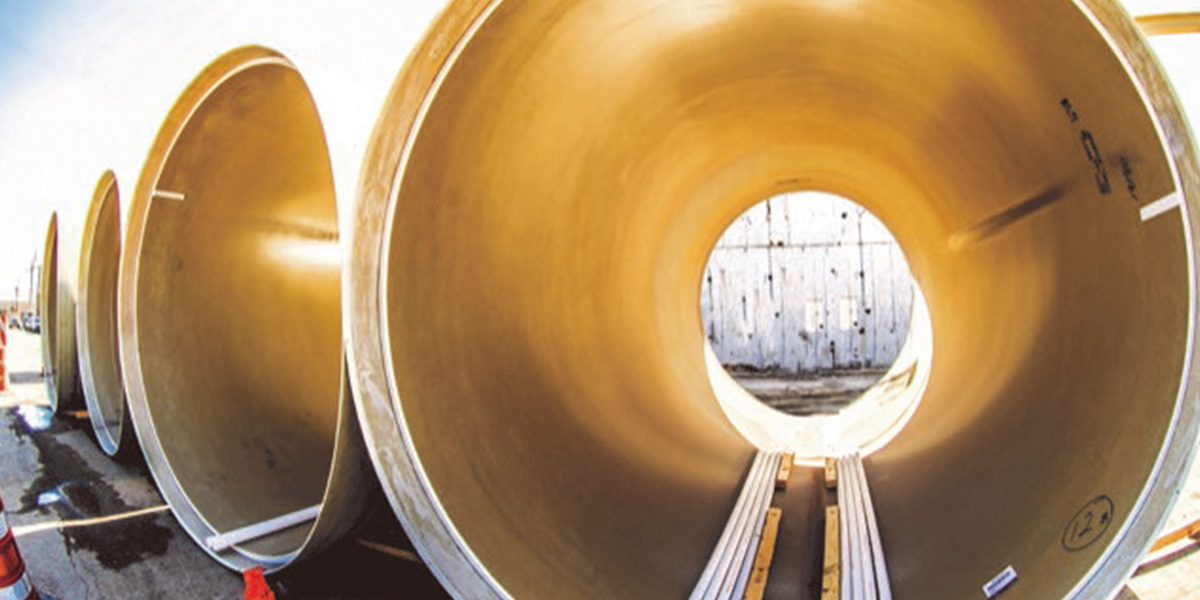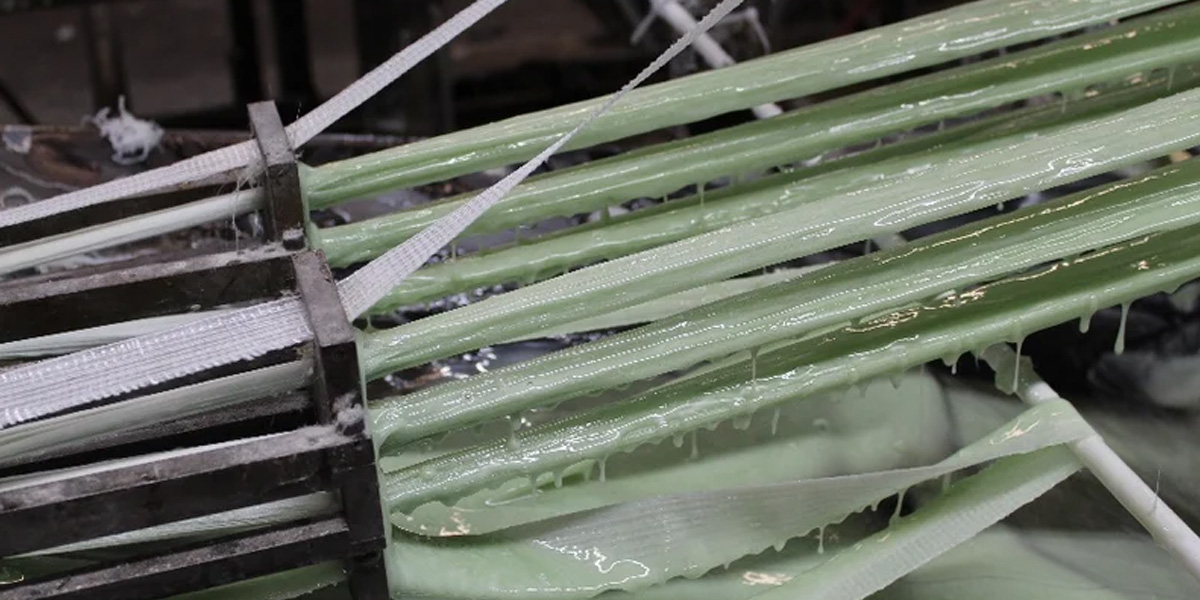General description:
Fiberglass rebar, also known as glass fiber reinforced polymer (GFRP) rebar, is produced through a process called pultrusion. Here’s an overview of the production process:
Step 1: Raw Materials
- Fiberglass rovings (bundles of glass fibers)
- Resin mixture (a combination of polymer resin, hardener, and additives)
- Chopped glass fibers (optional)
Step 2: Roving Unwinding
- The fiberglass rovings are unwound from their spools and fed into the pultrusion machine.
Step 3: Resin Mixing
- The resin mixture is prepared by mixing the polymer resin, hardener, and additives in a specific ratio.
Step 4: Pultrusion
- The fiberglass rovings are pulled through a resin bath, where they are coated with the resin mixture.
- The coated fibers then pass through a heated die, which shapes the mixture into a continuous profile (e.g., rod, bar, or grid).
- The die is designed to apply heat and pressure to cure the resin and bond it with the glass fibers.
Step 5: Pulling and Curing
- The pultruded profile is pulled through a series of heated zones, where it is cured under controlled temperature and pressure conditions.
- The curing process can take several minutes, depending on the desired properties of the final product.
Step 6: Cutting and Finishing
- The cured rebar is then cut to the desired length using a saw or cutting machine.
- The rebar is then sanded to remove any surface imperfections and to create a uniform finish.
- A protective coating can be applied to enhance the rebar’s durability and resistance to corrosion.
Step 7: Quality Control
- The finished rebar is inspected for visual defects, such as cracks or surface imperfections.
- Mechanical testing is performed to ensure the rebar meets the required tensile strength, elasticity, and impact resistance.
- The rebar is then certified according to relevant industry standards, such as ASTM or ISO.
The resulting fiberglass rebar is a high-strength, corrosion-resistant material suitable for use in various construction applications, including building foundations, bridges, and infrastructure projects.
Optional Step: Chopped Fiber Addition
- Chopped glass fibers can be added to the resin mixture to enhance the rebar’s mechanical properties and durability.
- The chopped fibers are mixed with the resin and then pulled through the pultrusion die along with the fiberglass rovings.
The production process can be customized to produce rebar with specific properties, such as varying diameters, lengths, and mechanical properties, to meet the requirements of different construction projects.
Final Product:

Production Equipment:

Pultrusion Line: The pultrusion process is a continuous process used to manufacture fibreglass rebar. The pultrusion line consists of a series of machines that work together to produce the rebar. The main components of a pultrusion line include:
- Resin Injection System: This machine injects a mixture of resin and catalyst into the pultrusion die.
- Pultrusion Die: This is a heated die that shapes the fibreglass rebar to the desired form.
- Pulling Unit: This machine pulls the fibreglass rebar through the pultrusion die at a controlled speed.
- Curing Oven: This oven cures the resin, bonding the glass fibres together.
- Cutting Unit: This machine cuts the fibreglass rebar to the desired length.
Other Essential Equipment:
- Glass Fibre Chopping Machine: This machine chops the glass fibres to the desired length.
- Resin Mixing Machine: This machine mixes the resin and catalyst to the desired ratio.
- Glass Fibre Feeding System: This system feeds the chopped glass fibres into the pultrusion die.
- Quality Control Equipment: This includes machines that test the physical properties of the fibreglass rebar, such as tensile strength and diameter.
Optional Equipment:
- Surface Treatment Machine: This machine applies a surface treatment to the fibreglass rebar to improve its bonding with concrete.
- Bundle-forming Machine: This machine bundles multiple fibreglass rebars together for easy handling and storage.
1.Glass Fiber Racks

Both E-glass and S-2 glass fibers are used in fibreglass rebar due to their excellent mechanical properties, corrosion resistance, and durability. The specific type of glass fiber used depends on the desired performance characteristics, application, and cost considerations.
Glass Fibre Raw Material Recommendation:
| JUSHI 386T Direct Roving for General Purpose | Linear density variation | Moisture content | Sizing content | Breakage strength |
| Unit | % | % | % | N/tex |
| Test menthod | ISO1889 | ISO3344 | ISO1887 | ISO 3341 |
| Standard range | ±5(<600 tex) ±4(≥600 tex) | ≤0.07 | 0.50±0.15 | ≥0.40(≤17μm) ≥0.35(18~24μm) ≥0.30(>24μm) |
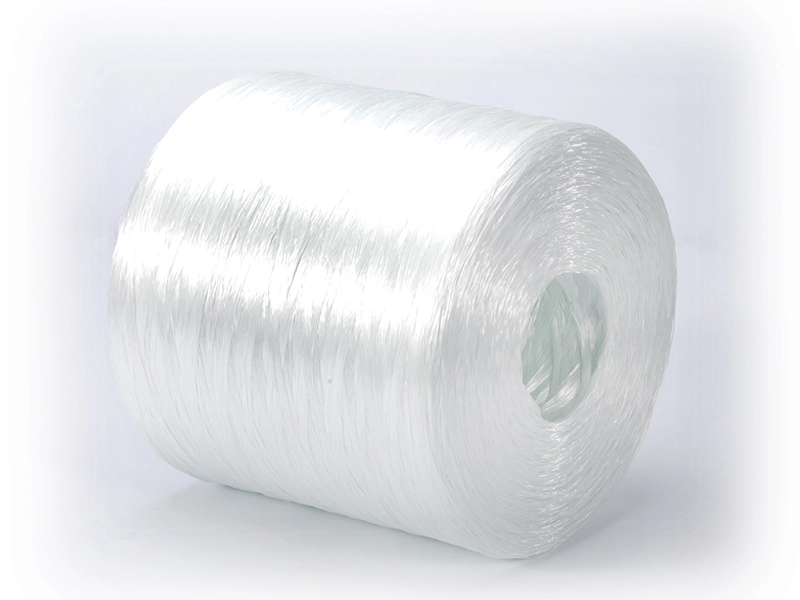
| CPIC 469HT | Linear density variation | Moisture content | Sizing content | Breakage strength |
| Unit | % | % | % | N/tex |
| Test menthod | ISO1889 | ISO3344 | ISO1887 | ISO 3341 |
| Standard range | ±5% | ≤0.1 | 0.60±0.15 | ≥0.25 |
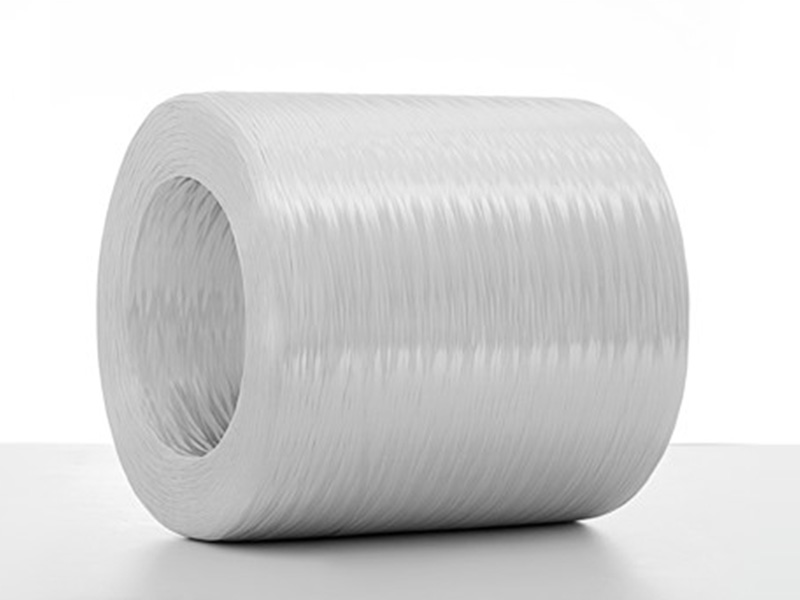
2.Resin Bath & Winding Device

Pultrusion Resin:
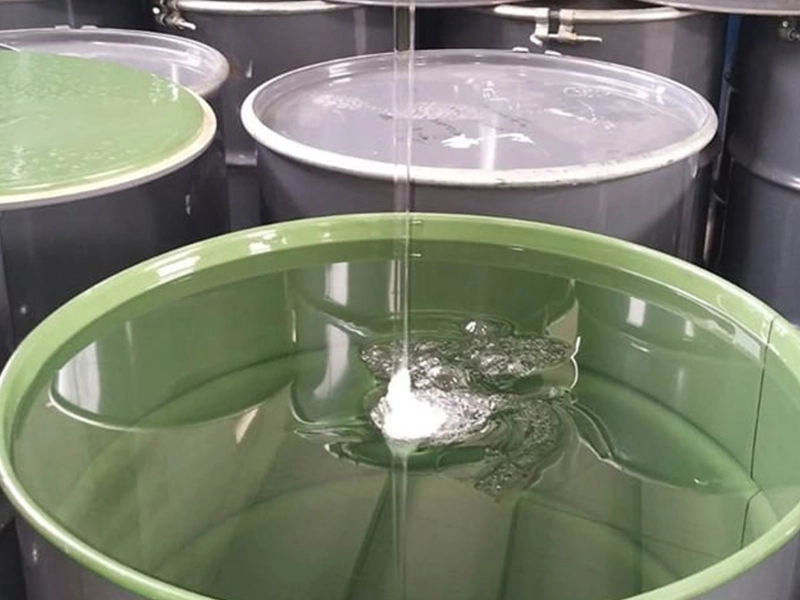
3.Oven

4.Unwinding Part

5.Cooling System

6.Tractor

7.Automatic Cutting Device

8.Automatic Collection and Ctacking Device

Technical Parameter of GFRP Rebar Production Line
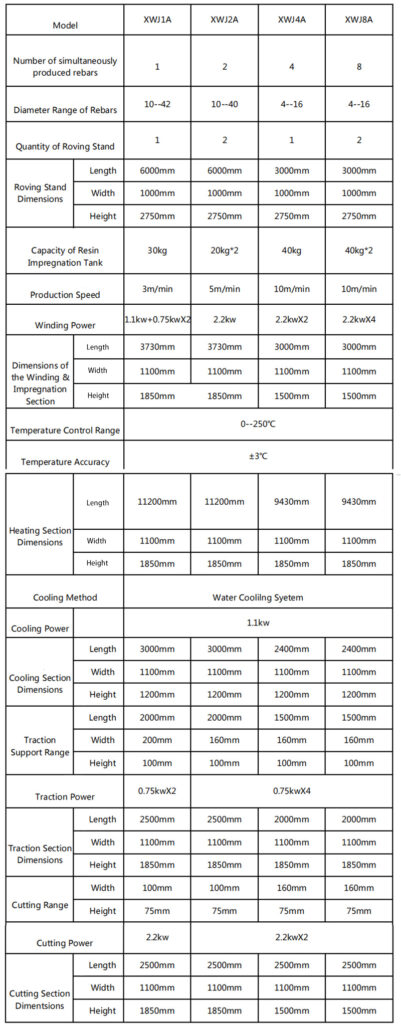
Sample Information:

Bending of Fiberglass Rebar
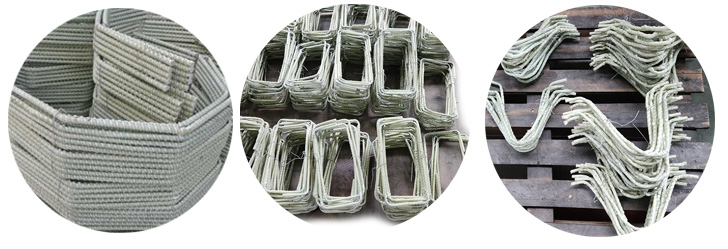
Application
